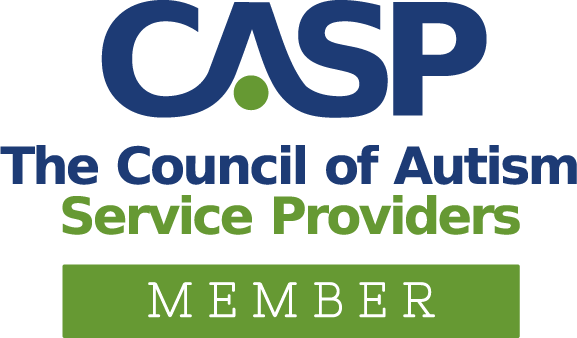What is an example of shaping chaining behavior?
Behavior chaining is a widely utilized instructional strategy by therapists in Applied Behavior Analysis (ABA) therapy sessions for individuals with autism. By employing chaining techniques in ABA therapy, individuals on the autism spectrum can significantly enhance their learning outcomes. This improvement can lead to effective skill acquisition, decreased frustration, and increased engagement during therapy sessions.
Behavior chains are sequences of related behaviors that, when linked together, form a complex behavior. Behavior chains have the potential to simplify complex tasks by compartmentalizing them into smaller and more manageable parts, which can be beneficial for people with Autism Spectrum Disorder (ASD) since it makes learning easier.
Most parents and caregivers of children with ASD have expressed keen interest in implementing behavior-chaining strategies at home. A common question is: “What is an example of shaping chaining behavior?” This question underscores the desire to understand better how to effectively use this strategy to improve the lives of those with ASD.
Chaining in ABA therapy may initially seem complex due to its time-consuming nature. However, we aim to demystify the process in this blog post from ABA Centers of America. We will explain what chaining is, how it works, the benefits it offers to individuals with autism, and provide an ABA chaining example. We aim to help you better understand how to apply this powerful tool in your home environment correctly.
What is Chaining in ABA Therapy?
Behavior chaining is a fundamental strategy in ABA therapy, routinely employed by ABA professionals like Board Certified Behavior Analysts (BCBAs) and Registered Behavior Technicians (RBTs). This method is instrumental in helping children with autism learn skills more efficiently and effectively. These skills can significantly improve their quality of life, propel academic progress, and aid them in achieving their personal goals.
ABA therapy is a methodology developed and continually studied by psychology, neuroscience, and behavior professionals. Its primary aim is to engender changes and improvements in specific behaviors. BCBAs achieve this goal by designing an individualized ABA therapy plan that addresses each client’s unique needs and objectives.
Behavior chaining in ABA therapy sessions allows students to complete complex actions or routines by following easier and more manageable instructions. Over time, these smaller steps build up to form a sequence of more extensive behavior. Behavior chains also promote habits through recognition based on the specific chaining used. As a result, behavior chaining enables individuals with autism to gradually complete tasks they previously found daunting, fostering confidence in their abilities.
Chaining in ABA therapy provides a structured approach for ABA therapists and caregivers. It allows them to help children with ASD achieve their goals in an efficient, effective, and measurable manner. Some skills that ABA experts can teach using chaining include:
- Brushing teeth
- Toileting
- Mopping the floor
- Emptying a dishwasher
- Ordering ice cream
- Many other skills that promote independence
ABA Chaining Example
Behavior chaining in ABA therapy teaches various skills and behaviors through small, manageable steps. For instance, if an ABA therapist aims to impart the skill of tooth brushing using behavior chains, the process would unfold as follows:
- Pick up the toothbrush
- Apply toothpaste
- Turn on the faucet and moisten the toothbrush
- Brush teeth, moving from front to back
- Brush teeth, sweeping from side to side
- Expel the foamy toothpaste
- Rinse mouth with water from the faucet and spit it out
- Clean the toothbrush under running water
- Return the toothbrush to its holder
Once the child masters each step, they can execute the entire task independently, enhancing their morning and bedtime routines. Behavior chaining equips individuals with developmental disorders such as autism with the tools to attain independence and improve their daily living skills. It also cultivates a heightened confidence in their ability to carry out essential routines and skills with minimal assistance.
Behavior Chains and Their Benefits for Neurodiversity
Behavior chains increase the likelihood of success in learning. Research on chaining in ABA therapy from the National Library of Medicine suggests that dividing a task into smaller, manageable steps and teaching them in sequence can significantly enhance learning success for individuals with autism. This approach minimizes overwhelm and blocking, facilitating smoother learning processes.
Behavior chains also increase predictability. They provide specific expectations and steps for the target behavior, eliminating the need for guesswork or inferences that individuals with ASD often find challenging to understand. This predictability fosters a conducive learning environment and enhances memorization in neurodiverse individuals.
Furthermore, chaining in ABA therapy often creates enjoyable and engaging sessions. Many clients feel celebrated and encouraged during these sessions, which results in greater participation and engagement. In essence, behavior chaining not only aids in skill acquisition but also contributes to a positive therapeutic experience.
Behavior Chaining Techniques
Every individual on the autism spectrum has a unique learning style. Therefore, ABA therapists employ various chaining strategies tailored to the target behavior and the client’s preferences. St. Cloud University outlines the following behavior-chaining techniques used in ABA therapy:
- Forward chaining: This technique involves teaching the first step of the behavior, then systematically and gradually introducing subsequent steps until the individual masters the entire chain.
- Backward chaining: In this method, the BCBA or RBT teaches the last step of the behavior first. Then, add the preceding steps until the individual attains independent mastery of the whole behavior.
- Total task chaining: The individual performs all the behavior steps until completing the chain. Stimuli or reinforcement is provided only for the actions that require support.
Each method offers benefits, depending on the child’s specific context. The choice of behavior-chaining technique hinges on the target behavior and the client’s circumstances. Regardless of the ABA therapist’s method, the overarching goal remains the development of functional behavior that fosters independence and growth.
Applying ABA Chaining at Home
While therapists often employ chaining in clinical or educational environments, it can also be beneficial to utilize it at home to assist individuals with ASD in acquiring new skills. Parents and caregivers can implement this method by subdividing behaviors into smaller steps and offering rewards for progress. Self-care, communication, and school readiness skills are prime examples of areas parents and caregivers can address effectively through behavior chaining at home.
To better understand how behavior chaining works at home, we recommend that you seek guidance from your child’s RBT and BCBA. Researching ABA chaining protocols, like this example from the Nebraska Autism Spectrum Disorders Network, can also help you acquire more knowledge. When implementing this technique at home, it’s crucial to pay close attention to each step of the task and celebrate progress as your child accomplishes mastery of individual actions. Behavior chains can serve virtually any behavior you wish to target.
Starting ABA Therapy with ABA Centers of America
ABA Centers of America often incorporate behavior chaining into ABA therapy plans to enhance the learning success of our clients. As with many aspects related to autism, chaining in ABA therapy requires patience, compassion, and understanding to grasp each component of the process and apply it effectively for optimal results.
You can access the best ABA therapists in New Hampshire and Massachusetts by choosing ABA Centers of America. If you have further questions about autism, behavior chaining, or ABA therapy, please don’t hesitate to call us at (844) 923-4222. You can also contact us on our website and explore our services and informative blogs!







